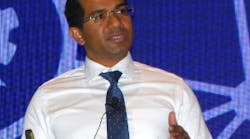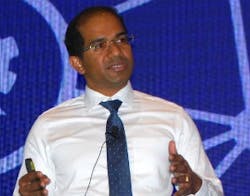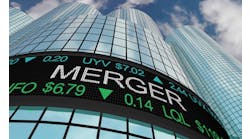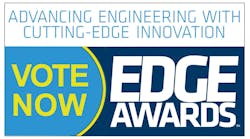“Google speed at Amazon cost.” Frost & Sullivan’s Ram Ramasamy discussed the mega-trends shaping the digitalization of industry at this week’s Yokogawa Users Conference in Orlando.
“There is a digital shift happening, and you can be behind it or you can grab it by the horns, go on that digital journey and reap the outcomes.”
That was the big-picture takeaway for attendees of the Yokogawa Users Conference 2018 this week in Orlando from Ram Ramasamy’s presentation titled “#ShiftHappens: Industry, Competition, and Customers,” where the industry director for Frost & Sullivan predicted an imminent shift—a mega-trend—in business models, at least among those solution providers who will most benefit from digital transformation.
This emergence of new business models is the most important outcome of digital transformation, he claimed. And this trend is not merely reliant on individual tools or better data analytics; it’s something larger than that—continuous machine learning, a greater expectation of data quality, and a shift to the outcomes-as-a-service approach. “The traditional way of doing business is completely changing,” he told the room full of Yokogawa personnel and customers who are, in many cases, leaders in implementing that change.
Ramasamy cited five key technology transformations that will enable this smart future: intelligent sensors; smart gateways; TSN/IP low-latency, highly deterministic networking; advanced analytics and digital platforms upon which are built industrial applications.
The proper application of these tools will result in successful model-based learning for asset performance, hassle-free UX (user experience), end-to-end secure integration and, as the presenter phrased it, “Google speed at Amazon cost.”
So why are early adopters adopting early? Ramasamy cited three primary drivers:
-
Capital efficiency—the desire to plan, build and operate efficiently;
-
Resource efficiency—to address vanishing know-how as skilled personnel leave the workforce; and,
-
Asset efficiency—reaping the rewards of connecting assets to one another and the larger network.
Operational efficiency still driving force
He referenced a recent Frost & Sullivan survey that found that operational efficiency was the greatest motivation for adopting digital technologies, just as volatility and cost pressures are driving acute focus on implementing digital initiatives. “Businesses want to be smarter. They want to be faster. They want to be simpler.”
Simple enough.
But this evolution, naturally, includes hurdles that some enterprises find insurmountable. The perception of high costs. A lack of expertise for implementation and project management. Lack of executive buy-in. Lack of understanding about how all of this actually works. Security concerns. (He could dive into cybersecurity, the presenter said, if he had another hour to speak.)
As such, there is a spectrum of participation. Ramasamy categorizes enterprises in three buckets according to their maturity along the digital journey:
-
Non-digitizers—no initiatives underway;
-
Selective digitizers—those very focused on digitalization and currently attacking asset-management issues; and,
-
Enterprise digitizers—those with a defined digitalization strategy that they are successfully implementing.
Within these groups he noted a frequent divide between internal and contracted digital efforts. Many companies have made digital investments within their enterprise. In these situations, control engineers are tasked with understanding programming and collecting and generating positive outcomes with advanced analytics. Often these efforts have failed, in part, because cultures cannot adapt and enterprises cannot keep up with the rapid pace of technology. Ramasamy suggested leaving these efforts to the experts who can manager projects better—again referencing that outcomes-as-a-service model.
“This disruption, this transformation by digital is inevitable. It is all around us,” he said. “The question is how ready are you to be disrupted?”
Or, how are solutions providers readying themselves for this new business model? Including the lifecycle of the asset in their total-expenditure analysis. Accounting for extended service contracts and more touchpoints with customers who—frankly—are not in the business of managing assets. This is a good thing for those who are in the business of managing assets.
He summarized the mindset of this new approach with the term “stickiness”—outcomes-as-a-service providers must increase their stickiness with customers. The longevity of contracts—the success of the partnerships—depends on how sticky solution providers are with their customers.
“It’s all about the value you are providing in your solutions. It’s all about experiences,” Ramasamy summarized. “How does the customer feel walking out the door each night? Did your system help him? Did you improve the experience for the asset operator?”
Increasingly, producing a positive response to questions like that will rely on whether shift happened.





